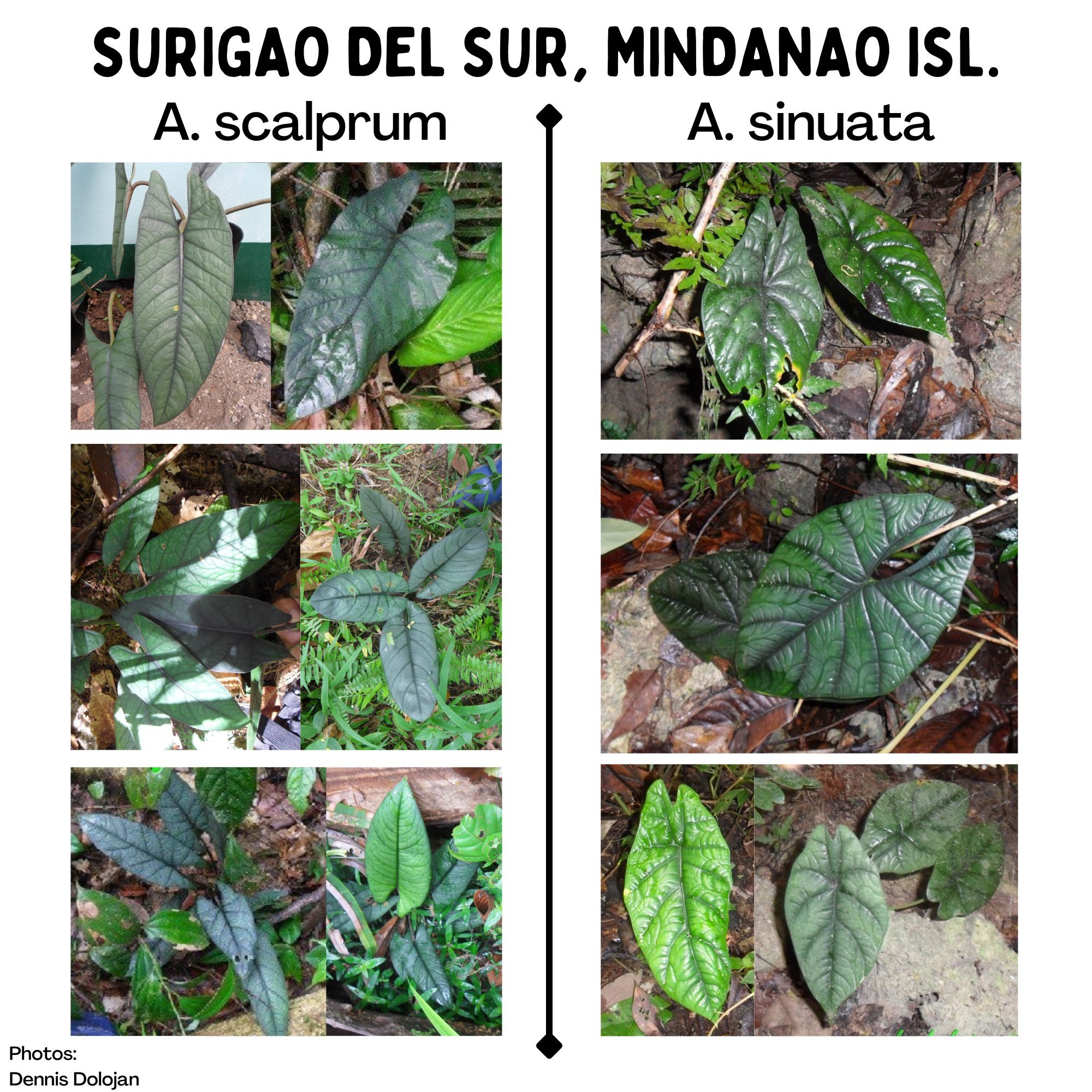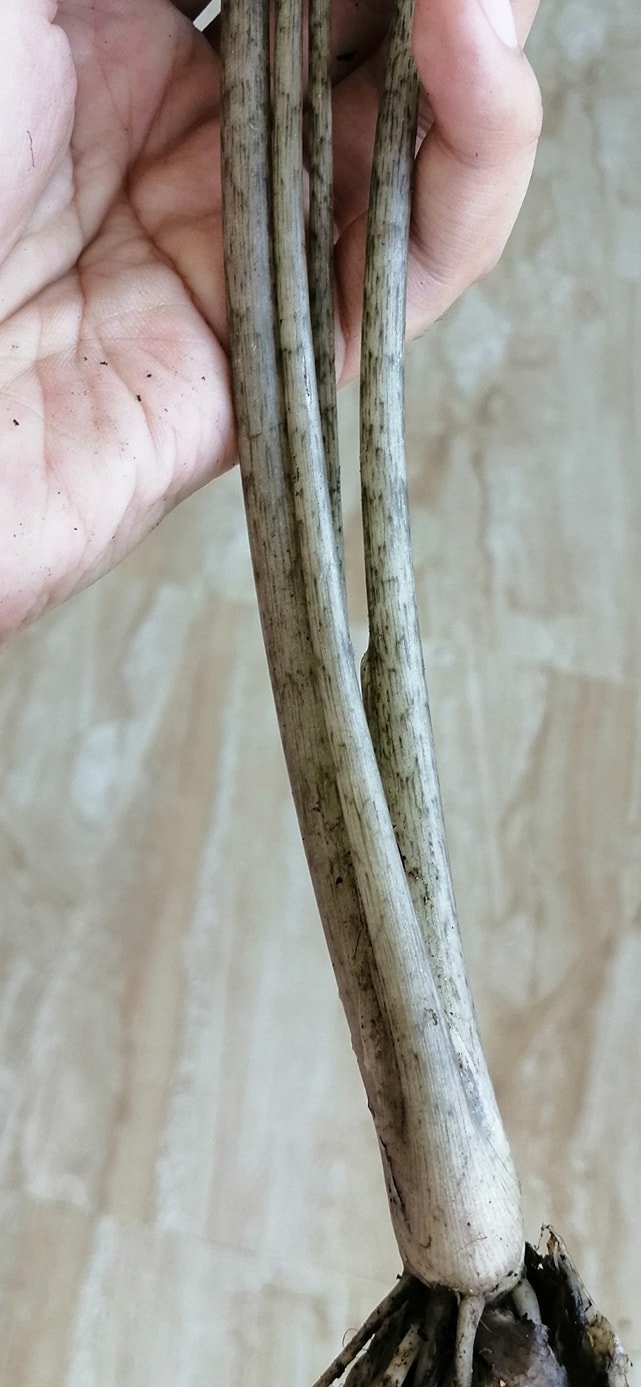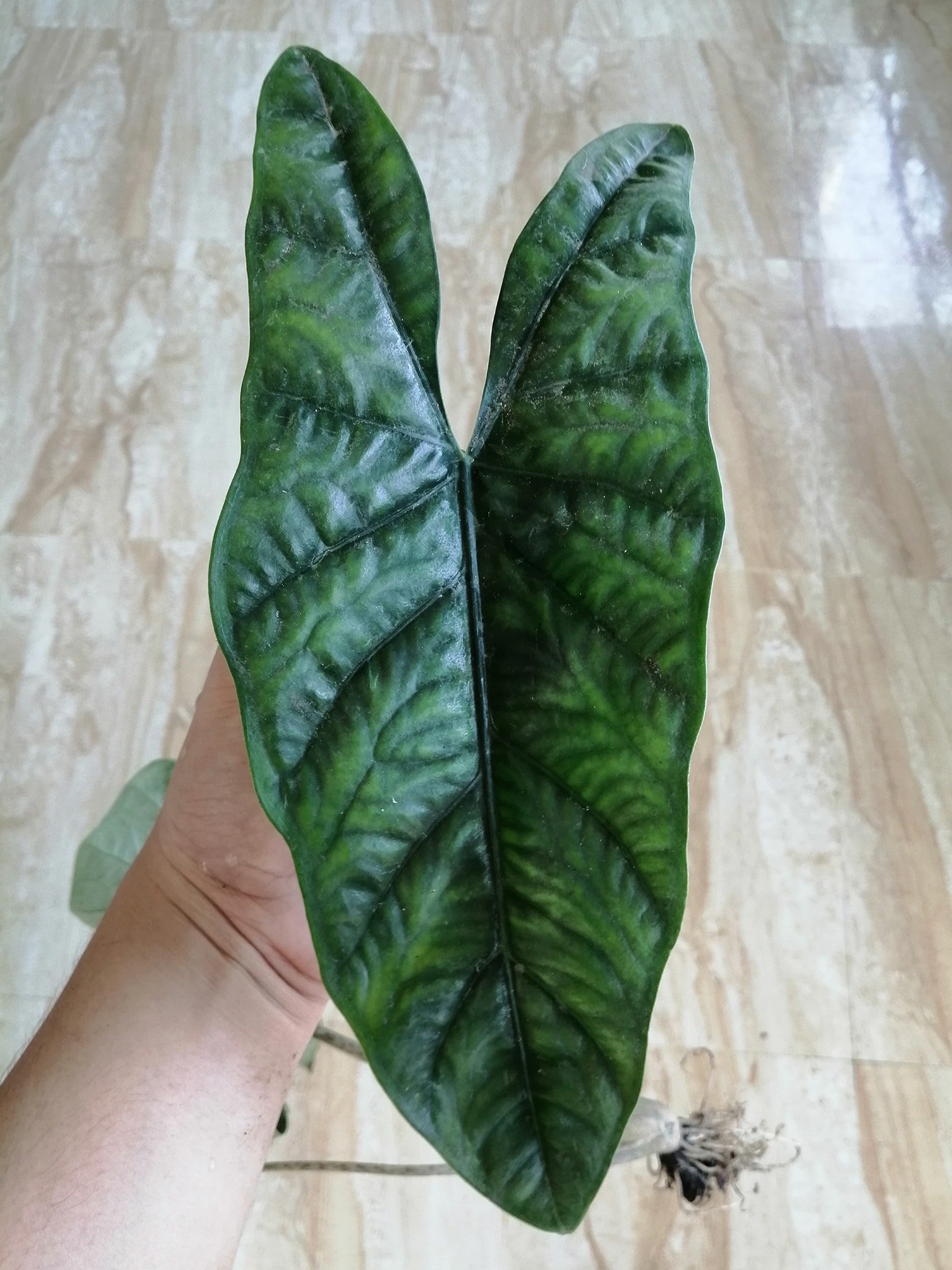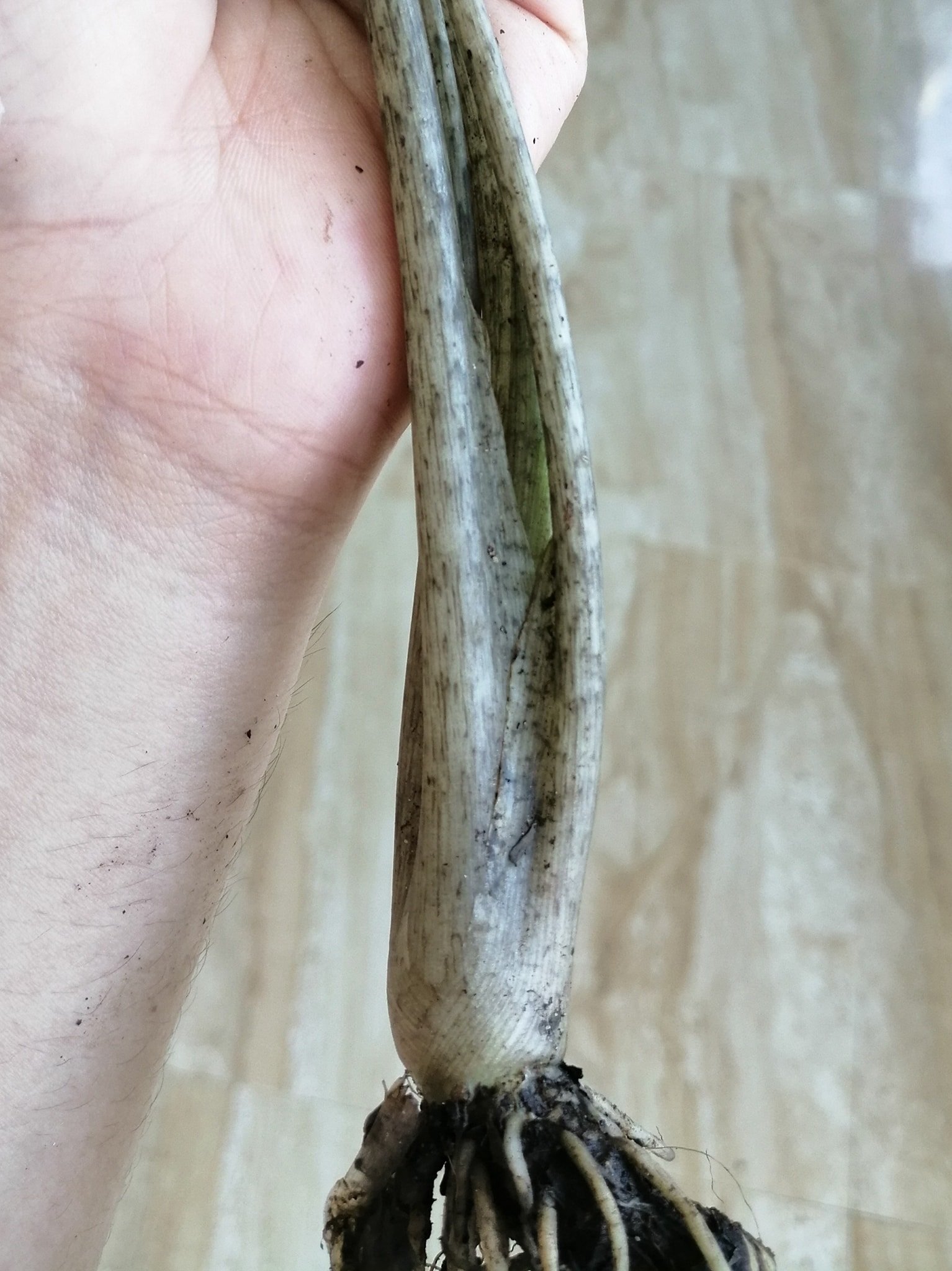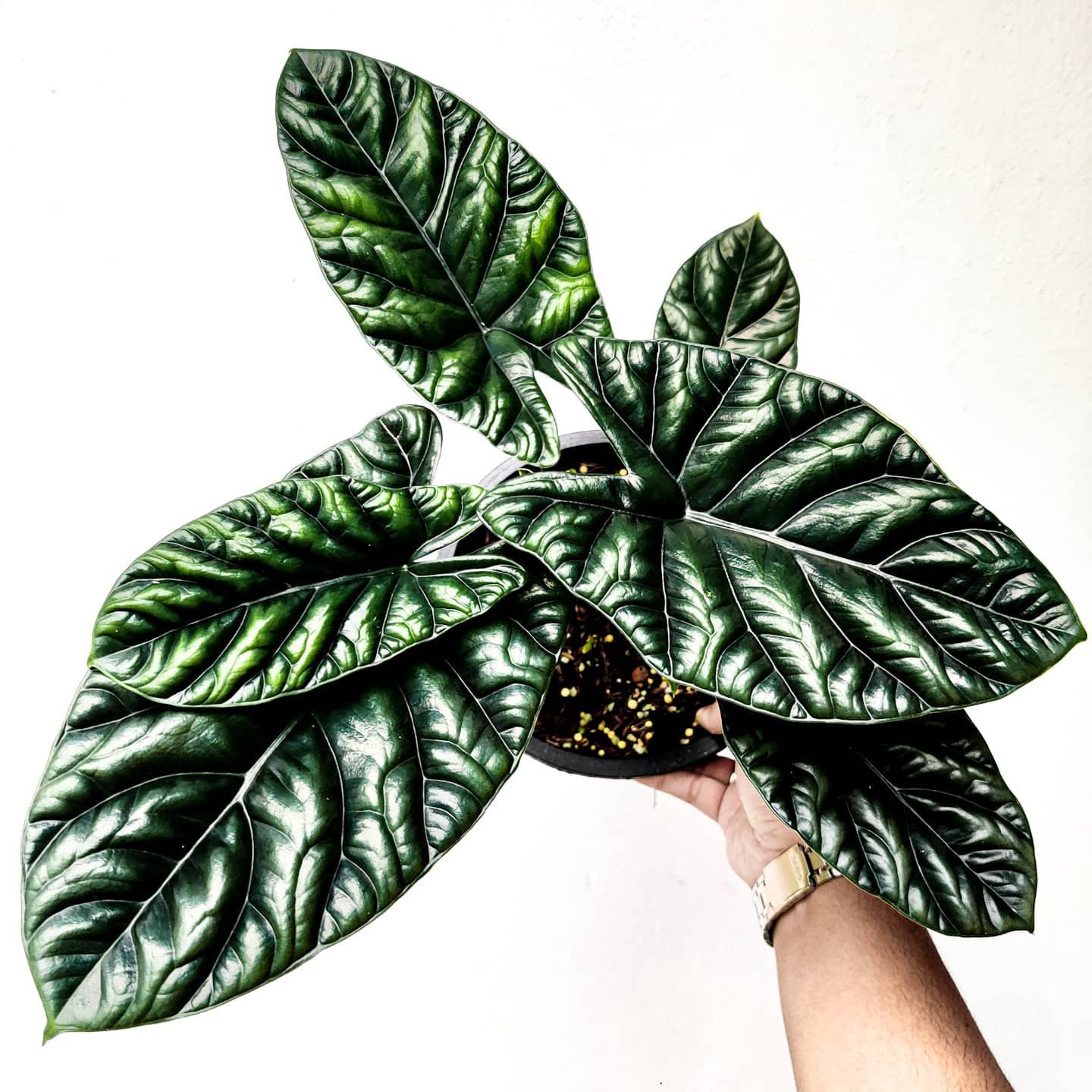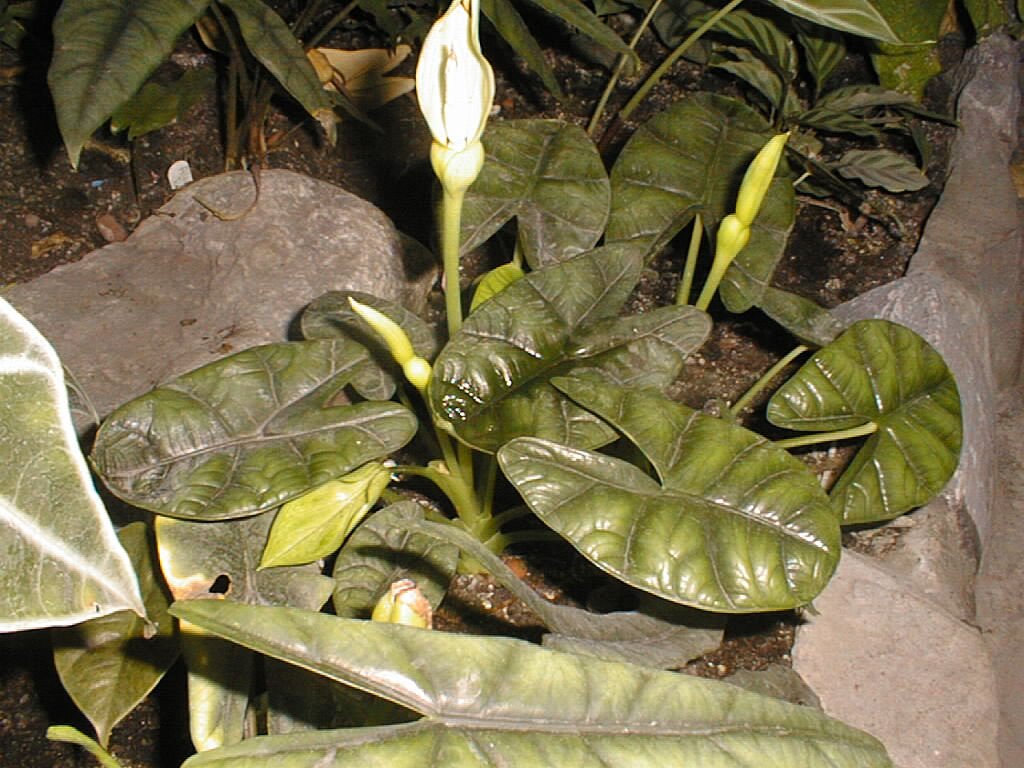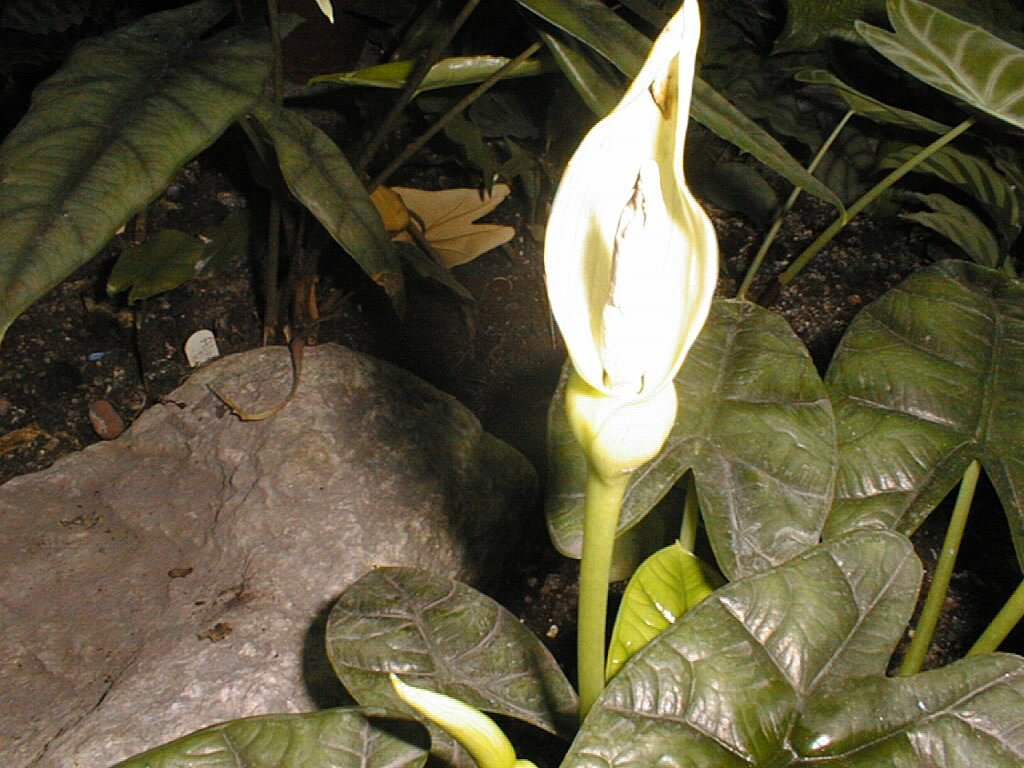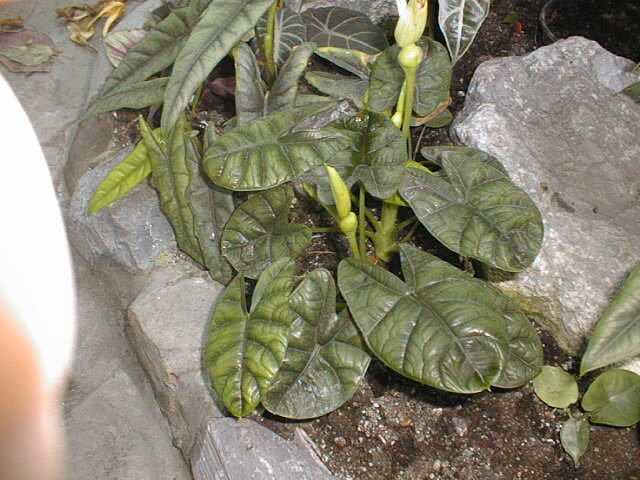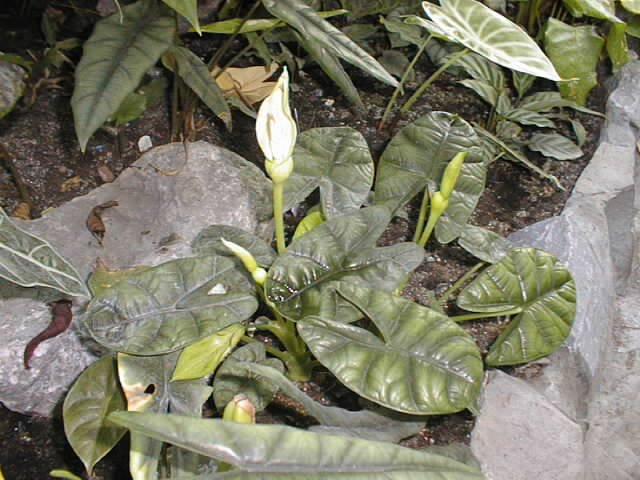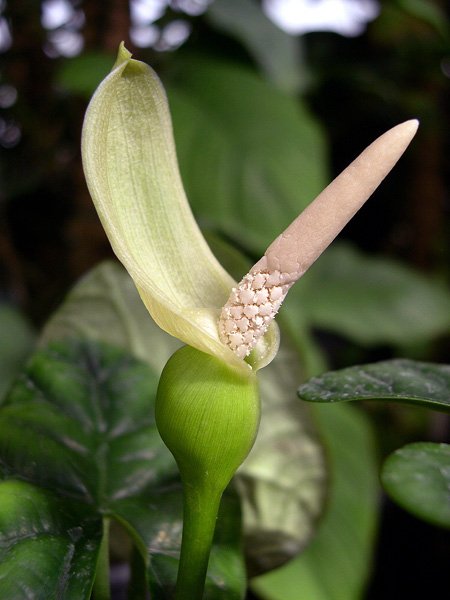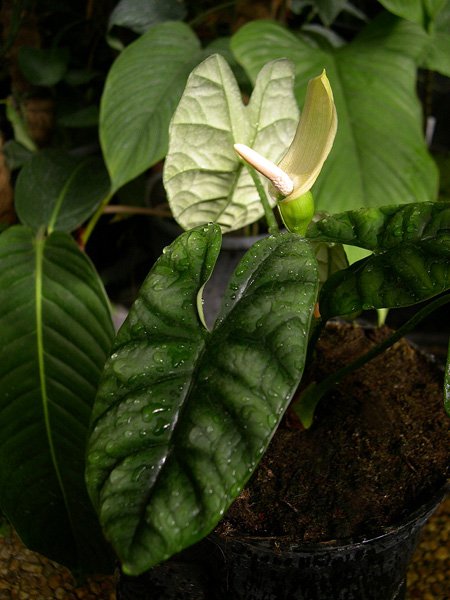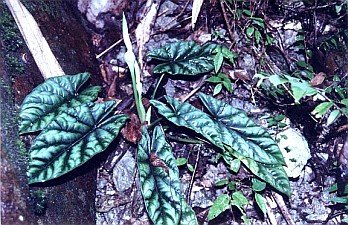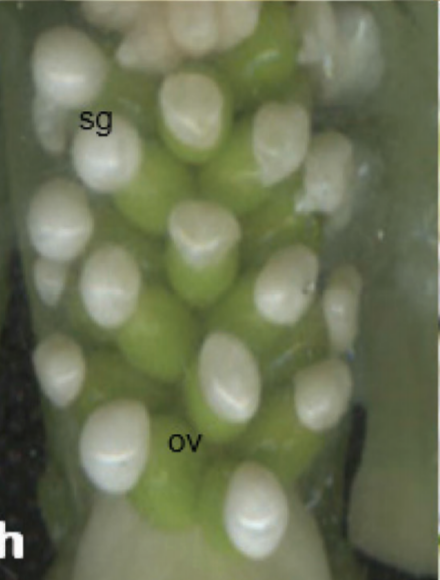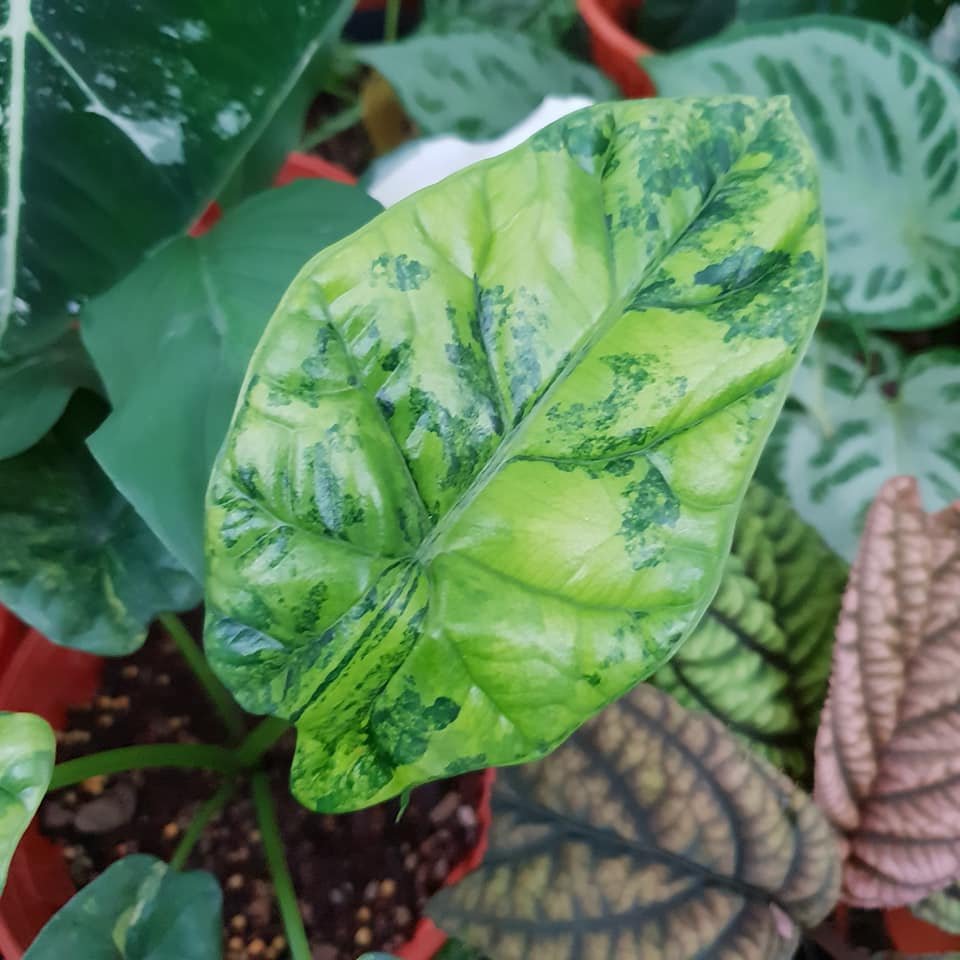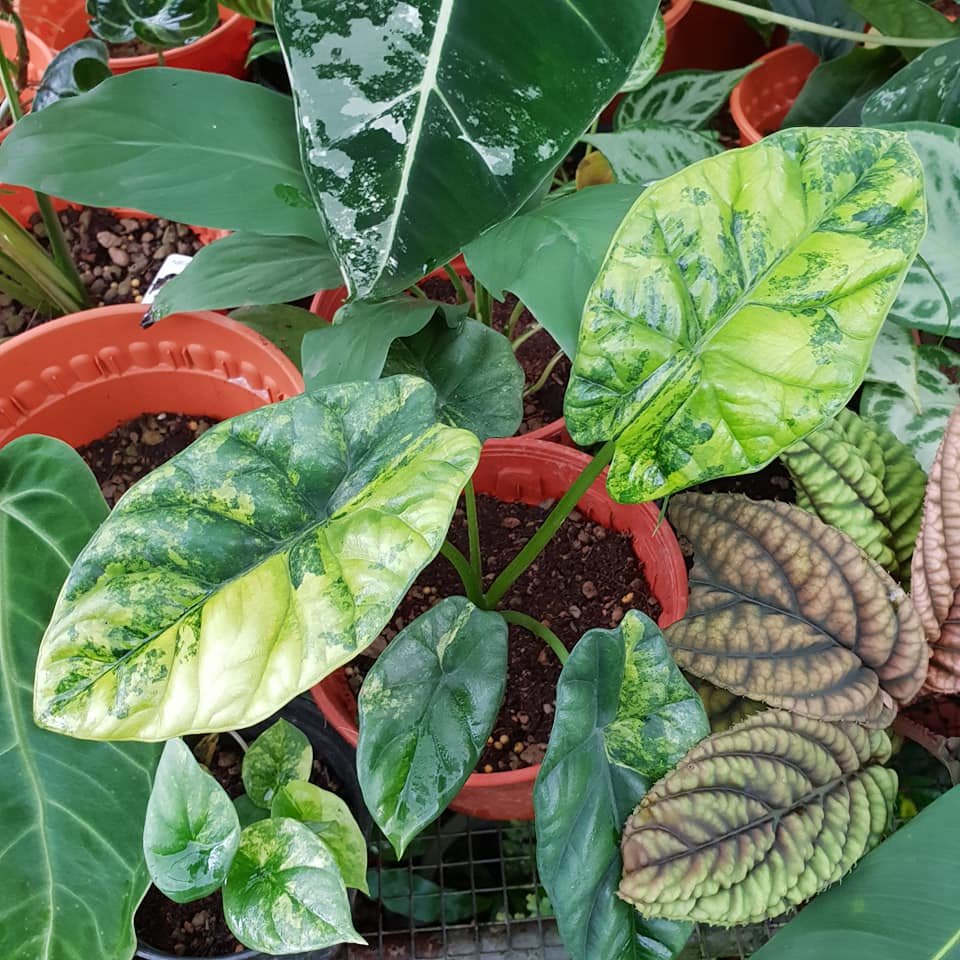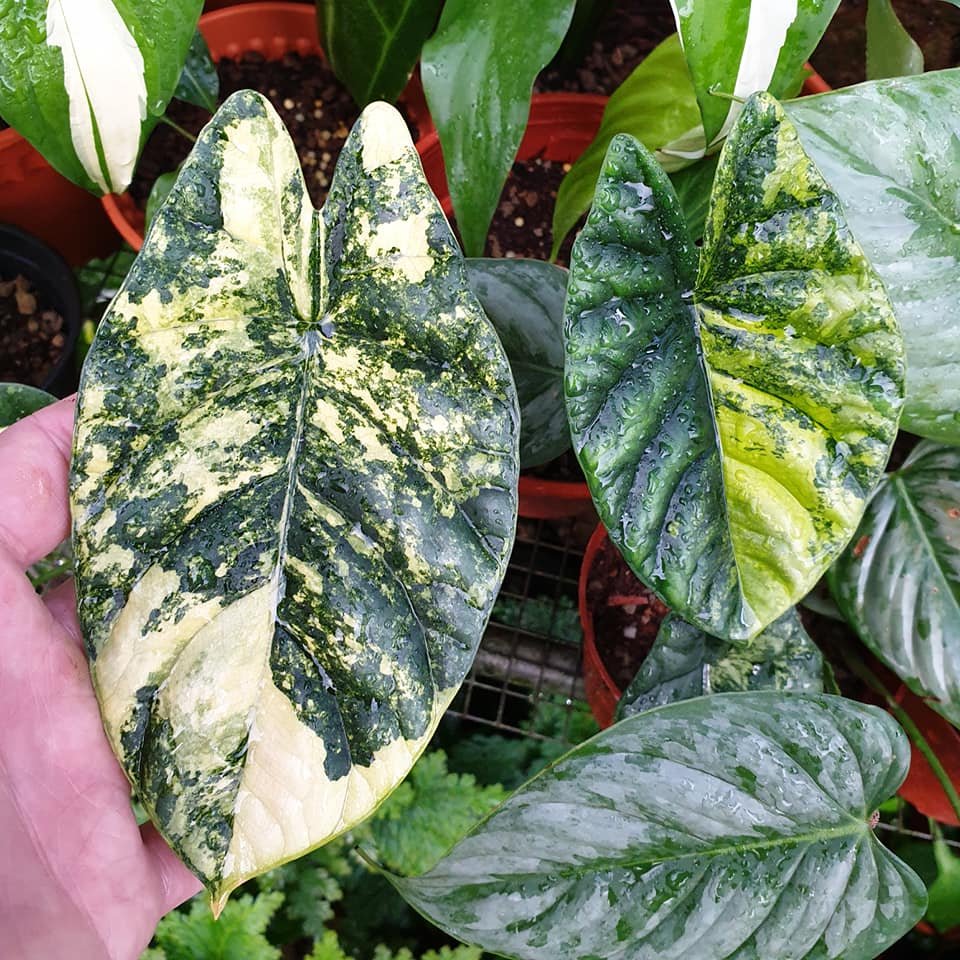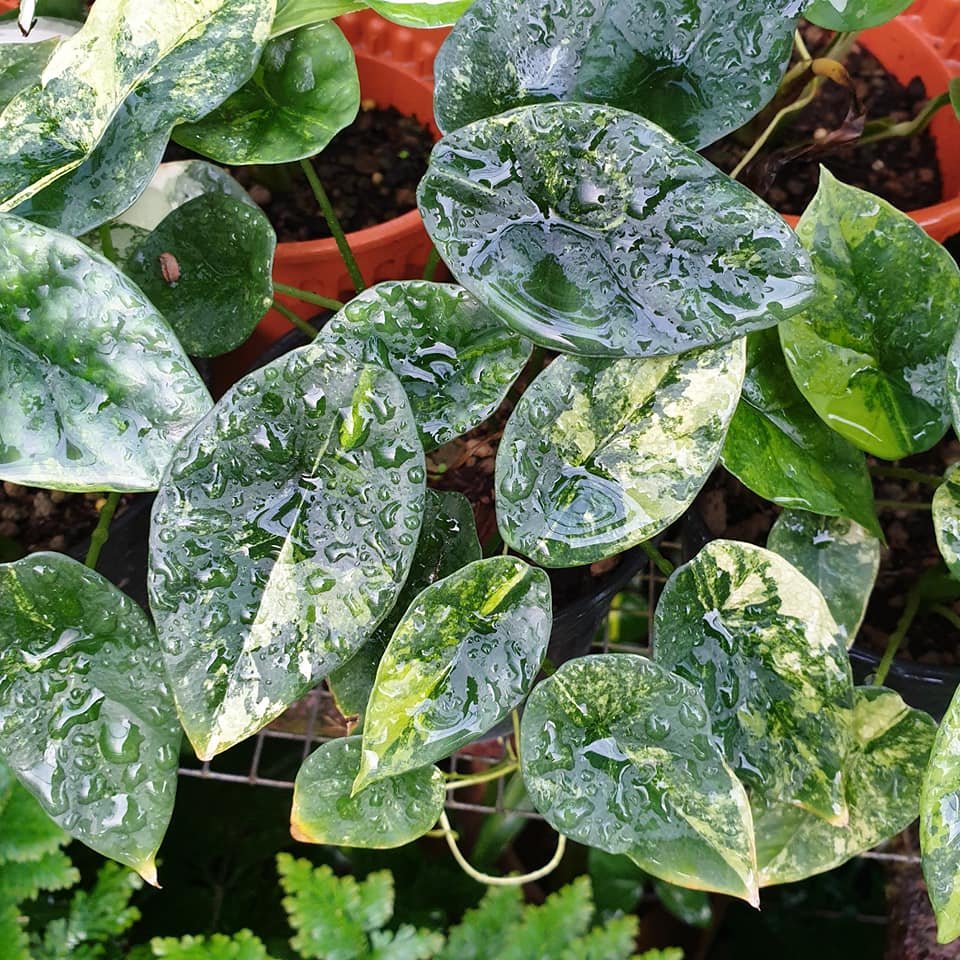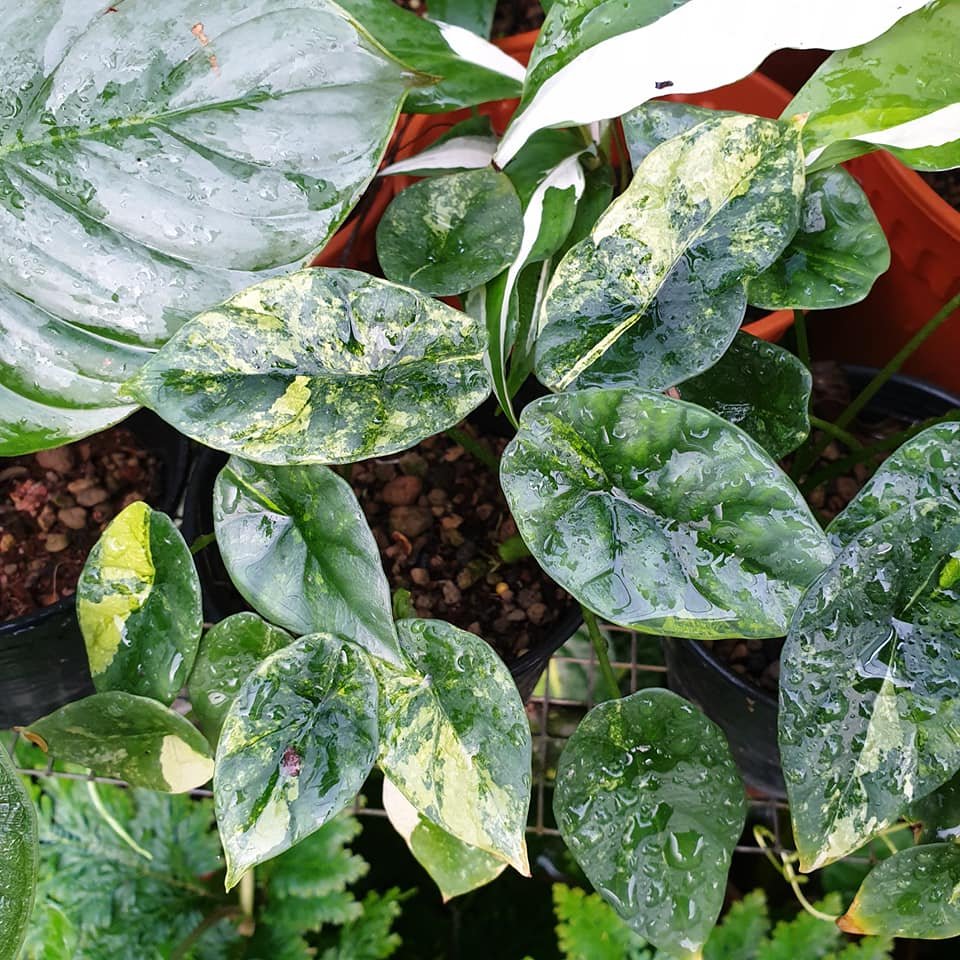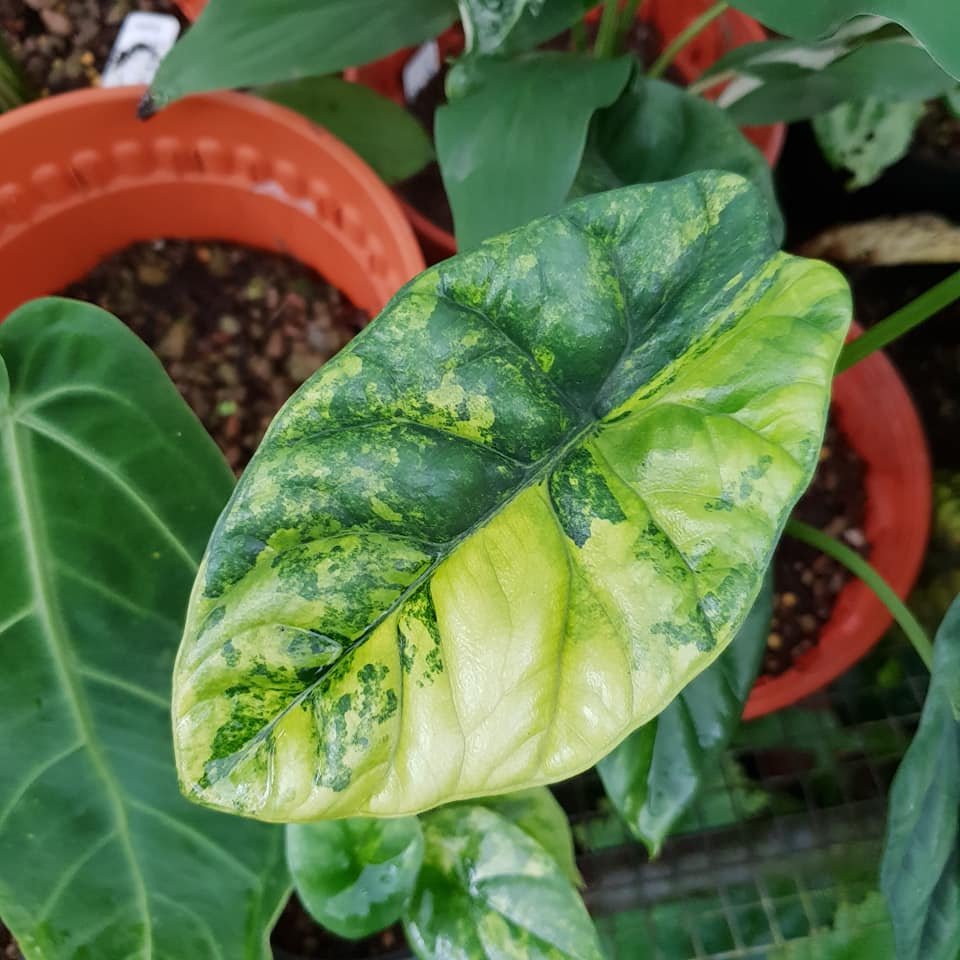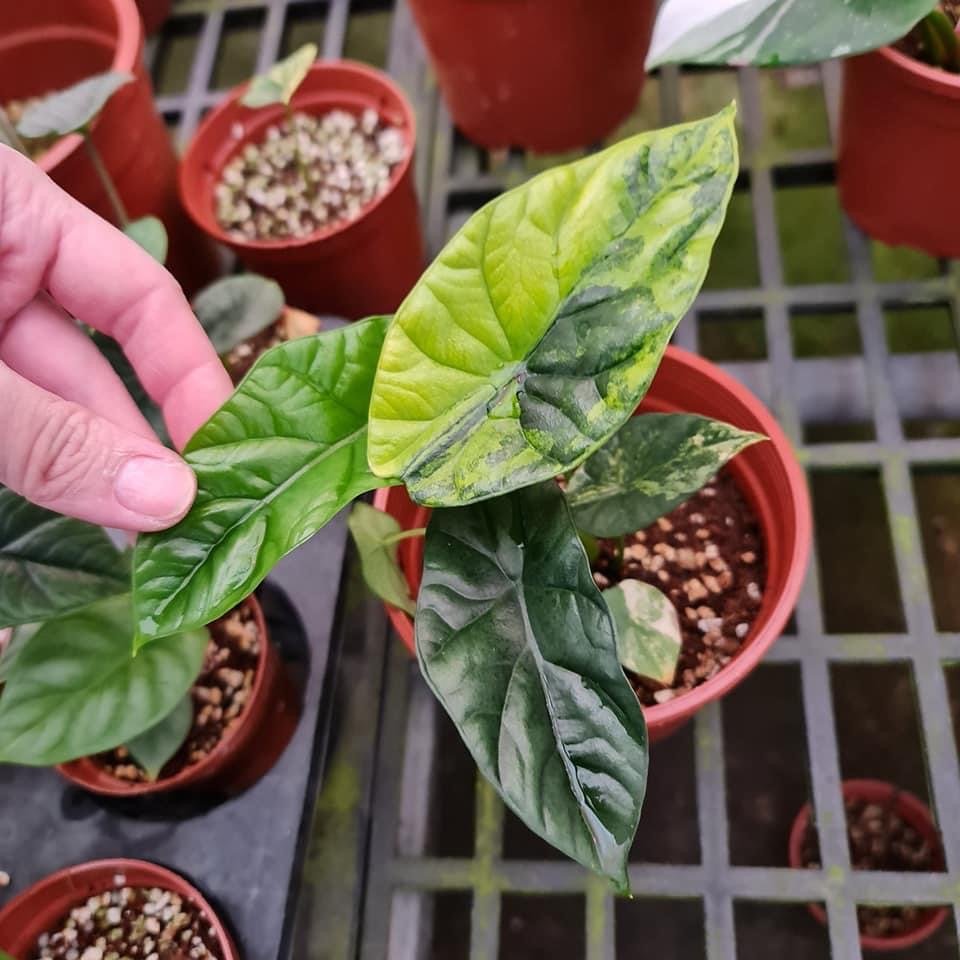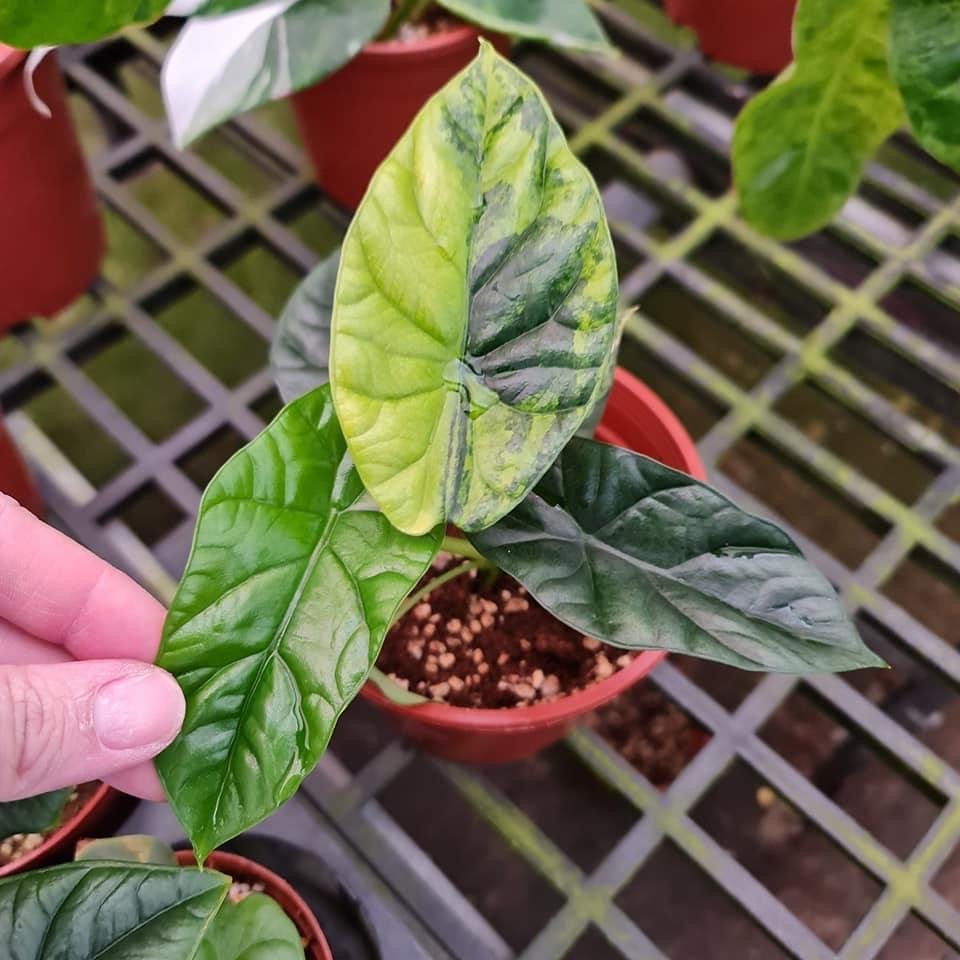ALOCASIA SINUATA
ORIGINAL DESCRIPTION:
The Gardener's Chronicle V.24 P.678 (1885)
Ab aliis speciebus Alocasiis Philippinarum lamina folii parva tenuiter lanceolata subfalcata, lobis posticis minutis, venis impressis differt.
TYPUS: Cult. Botanischer Garten Miinchen, origin unknown, 1983, /. Bogner 1659 (M, holo). [Alocasia cv. Samar Lance; see Burnett, Aroideana 7 (1984) 99, fig. 38].
Photo by NadiPokoks
SYNONYMS: Alocasia bullata, Alocasia ‘Mirror Face’, Alocasia ‘Quilted Dreams’, Alocasia ‘Hawaii’, Alocasia ‘Mythic Rumpelstiltskin’ (incorrect renaming by Proven Winners)
DISTRIBUTION: Philippines, Samarm Leyte, Mindanao, Palawan
Map by Charlie Moonshade
CLIMATE: Tropical humid climate
Humidity is moderate throughout the year, ranging from 60% to 70%
Temperature is varies between the seasons - within the range of 48°F/9°C to 88°F/31°C during the day. Minimum temperatures never dip below 45°F/7°C
Rainy and humid season (October to May) and a dry season between June and October. The average annual rainfall is 1,200 mm
ECOLOGY: Unknown
SPECIES DESCRIPTION:
Herb to ca. 35 cm tall; stem [dimensions not known]; leaves several together; petiole ca. 19 cm long, sheathing in the lower ca. fifth to quarter; blade sagittate to ovato-sagittate, peltate or not, somewhat to markedly bullate, somewhat to thickly coriaceous, dark green (sometimes darker about main veins) adaxially, paler abaxially, with the margin sometimes very shallowly sinuate, 22-27 cm long; anterior lobe widest at to ca. 4 cm from the base, the apex broadly acute to obtuse and apiculate for 0.5-1 cm; anterior costa with 2-3 primary lateral veins on each side, diverging at 60-80° and adaxially impressed; axillary glands inconspicuous; subsidiary veins numerous (i.e. ca. quarter to half the secondary venation thicker than the rest); secondary and subsidiary venation forming rather ill-defined interprimary collective veins running, like the primary venation, into a somewhat conspicuous intramarginal vein 1-3 mm from the margin; posterior lobes acute, ca. third to half the length of the anterior, connate for 0-half of their length, the inner sides more or less linear-lanceolate; posterior costae diverging at 45-90°, with lamina to the sinus when leaf not peltate
INFLORESCENCE:
Inflorescences ?solitary to paired to clustered, subtended by lanceolate cataphylls to ca. 7 cm long (in the type these with reduced petiole and leaf blade); peduncle about three quarters to equalling the length of the petiole at anthesis; spathe 7-7.5 cm long, green; lower spathe 1.5-2 cm long, ovoid; limb broadly oblong-lanceolate, green, apiculate for ca. 0.5 cm; spadix somewhat shorter than the spathe, 4-6.5 cm long, very shortly stipitate with somewhat oblique insertion, white except for green ovaries; female zone ca. 6 mm long, 3-8 whorls of somewhat lax pistils; ovary globose, ca. 2 mm diam.; stigma pronounced - almost as large as the ovary, subsessile, thickly discoid to weakly 3-lobed; interstice ca. 7 mm long, the lower half of incompletely connate neuter organs, the upper half of sterile synandria, somewhat attenuate above and corresponding with spathe constriction, 2.5 mm diam. (dry); male zone 1-1.5 cm long, somewhat obconic, distally ca. 5 mm diam.:synandria rhombohexagonal, 4-5-merous, 2-3 mm diam., thecae not overtopped by synconnective; appendix 1.5^4.5 cm long, basally isodiametric with top of male zone then tapering distally; infructescence unknown.
VARIEGATED FORMS: YELLOW
ETYMOLOGY: The specific epithet for this species comes from the Latin sinus/sinuo, meaning curved, folded, or bent, and referring to the embossed surface of the leaf.
NOTES:
While this species has been well-known in cultivation both in the Philippines, and worldwide for over a century, it is botanically poorly known.
The type was at first said to have originated in the 'Malay Archipelago' (N.E. Brown, loc. cit.). However, the label has subsequently been altered in Brown's hand to indicate that the plant originated in the Philippines. Observations on the species' alleged large size made by W. Bull which Brown (loc. cit.) quoted (‘a full grown plant would be about 4 or 5 feet in diameter'), notwithstanding the much smaller dimensions of the type plant and matching material, are evidently incorrect (other material examined is somewhat smaller than the type).
Other specimens seen: Cult. University of Florida Agricultural Research Station ex Leyte Island, Croat 56900 (MO); Cult. Missouri Botanical Garden ex cult. Manila Memorial Park, Croat 57106 (MO); Cult. Missouri Botanical Garden ex Palawan, Croat 57188 (MO); Mindanao, Surigao Prov., without specific locality, Ramos & Pascasio BS 34353 (K, US).
Alocasia sinuata and Alocasia scalprum are sympatric on Samar and Leyte islands, and there are wild collected specimens that show characteristics that are reminiscent of both species.
Where Alocasia 'Samar Lance' is assumed to have come from. Specimens of Alocasia scalprum and Alocasia sinuata in this island can be distinguishable enough. There are however many intermediate forms, like the ones that are both slender (resembling scalprum) and bullate (resembling sinuata).
The overlapping specimens from Samar island seem to have a lot in common with the Alocasia scalprum from the northern part of Mindanao Island - Charlie Moonshade
Like Samar Island, there are forms of Alocasia scalprum and Alocasia sinuata that are easily distinguishable here. However, they also have intermediate forms. The bullate ones are assumed to be Alocasia sinuata, while the less-bullate ones to be Alocasia scalprum - Charlie Moonshade
Specimens from other islands also show high variability in terms of leaf shape and coloration
Alocasia sinuata as assumed, makes a reappearance. They are less bullate, but still maintainthe shield-like leaf shape. Specimens of Alocasia scalprum on the other hand, are consistently slender in shape, but not as slender as the ones found in Samar & Leyte.
CULTIVARS: There is a debate among growers that Alocasia sinuata ‘Quilted Dreams’ is a valid cultivar, however it appears there was some confusion in the 1980s, when what we now call Alocasia sinuata was a name used incorrectly for a sagittate leaved plant that was very likely a cultivar of Alocasia portei.
Potentially Alocasia portei, incorrectly labeled as Alocasia sinuata in David Burnett | The Cultivated Alocasia P.103 (1984)
What we now know as Alocasia sinuata was first dubbed Alocasia guttata var. imperialis (error which propagated into some collections, particularly in Australia) but eventually it was given the incorrect name of Alocasia ‘Quilted Dreams’ (of note that this type of nomenclature of genus followed by cultivar name is reserved only for hybrids, which Alocasia sinuata is not). One of the first attempts to tissue culture it led to another incorrectly named cultivar Alocasia ‘Hawaii’, which according to Burnett was not a great representation of the wild stock.
Notably, Alocasia sinuata under the name Alocasia ‘Quilted Dreams’ won the ‘Best in Show’ award at the IAS 1989 Show
HYBRIDS:
Alocasia ‘Frydek-Bullata’ (Alocasia micholitziana x Alocasia sinuata)
Alocasia ‘Lukiwan’ (Alocasia alba x Alocasia sinuata)
Alocasia ‘Simba Blue’ (Alocasia sinuata x Alocasia nebula)
Alocasia ‘Simpo’ (Alocasia ‘Lukiwan’ x Alocasia sinuata)
Alocasia ‘Sinuate Mac’ (Alocasia macrorrhizos ‘Big Mac’ x Alocasia sinuata)
Alocasia ‘Verta’ (Alocasia baginda x Alocasia sinuata)











